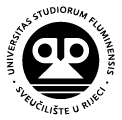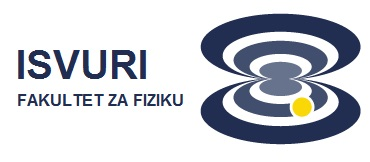Secondary Ion Mass Spectrometer, SIMS
Laboratory equipment is purchased as part of the project "Research Infrastructure for Campus-based Laboratories at the University of Rijeka" (RISK), which is co-financed by the European Union under the European Regional Development Fund.

Secondary Mass Ion Spectrometry (SIMS) is a microanalytical technique used to understand the composition (isotopic, elemental, and/or molecular) of any predefined microvolume from solid material. This technique is particularly useful in the semiconductor research and technology for measuring the concentrations of the impurities in the materials. Detection limits for most of the elements are in ppm or ppb range, making SIMS one of the most sensitive methods for the elemental analysis.
SIMS derives compositional information by directing a focused energetic ion beam at the surface of interest. These ions, referred to as primary ions, induce the emission of atoms and molecules from the solid’s surface, a small percentage of which exist in the ionized state. The emitted ions, referred to as secondary ions, are then collected and passed through a mass spectrometer.
SIMS measurements can be performed in three operating modes:
- Static SIMS: measurement of mass spectra of the specimen surface
- Dynamic SIMS: depth profiling of selected elements or molecules in the sample
- Surface imaging: elemental imaging of the sample surface
Our Secondary Ion mass Spectrometer (SIMS) is a Hidden system with the following equipment:
- ion gun for low-energy ions of inert and reactive gases (IG20) with energy range of 0.5 – 5 keV (O2+ or Ar+ ions) and ion-beam diameter of 100 μm
- Caesium ion gun (IG5C) with energy range of 0.5 – 5 keV and ion-beam diameter of 100 μm
- quadrupole mass analyser (MAXIM HAL7) with mass range: 1- 500 amu and Puls Ion Counting Electron Multiplier detector
- ionization source for Residual Gas Analyser (RGA) / Sputtered Neutral Mass Spectrometry (SNMS) mode
- electron gun (FG 500 – SPECS system) –for the neutralization of surface charging effects
|
|
Bruker DektakXTTM stylus profiler - is used for meassuring various physical properties of the surface of the material. In our laboratory, it is primarily used for meassuring the crater depth after SIMS depth profiling and the surface roughness. |
Contact
FACULTY OF PHYSICS
UNIVERSITY OF RIJEKA
Ulica Radmile Matejčić 2
51000 Rijeka
Tel.: +385 51 584 600
Fax: +385 51 584 649
Email: fizika@phy.uniri.hr














